This post may contain affiliate links. This just means I may receive a small commission at no extra cost to you for helping them promote their product or service. I don’t endorse any services I don’t personally use or recommend.
The Traditional Inca Trail trek through the Andean peaks of Peru needs to be on every traveler’s bucketlist. Embarking on a high-altitude hike through some of the most scenic swathes of Peruvian wilderness while immersing in the Quechuan (what we know as Incan) culture, you’ll learn about Peruvian food, history, and the day-to-day life of those who call these mountains home. Culminating in spectacular views of the iconic Machu Picchu- one of the new 7 wonders of the world.

But there’s a lot you need to know before you hit the trail. This comprehensive guide will help you choose the best tour company, help prepare you for the altitude, and inspire you to start searching for flights to Peru right now.
What is the Inca Trail & Why You Should Hike It
First, let’s talk about what exactly the Inca Trail is. To put it simply, it’s a carefully crafted stone trail leading to Machu Picchu.
Machu Picchu is a huge complex tucked into the mountains that was created (like the trail) by the Quechua people. We call them “Inca” peoples because when the Spanish arrived in Peru they mistook the name & we’ve just never corrected it since (classic colonizer move). “Inca” is simply what the Quechua people called the leader of the civilization- kinda like president or king.
Today, the Inca Trail is primarily a tourist hike leading to Machu Picchu. & they only way through the mountains for the people still living in the small villages dotted throughout the Sacred Valley.


But why should YOU cough up the cash to hike the Traditional Inca Trail rather than simply visit Machu Picchu independently?
Because without the trail…Machu Picchu isn’t all that impressive.
Hear me out, we all know Machu Picchu is spectacular. But it’s also crowded. Which really puts a damper on the breathtaking vistas and without a guide…the massive complex is really just piles of carefully stacked rocks. You’ll have no context. This is one of the rare attractions in the world where you NEED a tour. Here are a few other benefits for those who choose to hike the trail.
- Exclusive access to certain areas of Machu Picchu itself.
- Walk through the Sun Gate to early morning views of Machu Picchu.
- Solitary time at even more impressive Inca Sites along the trail.
- Views of Andean peaks like Salkantay.
- Gain a better understanding of Quechuan culture & history.
- Unparalled experience in the Andean wilderness.
Browse Alpaca Expedition Tours Here
They don’t JUST run tours on the Inca Trail (although I highly recommend it). Follow this link to browse all the Alpaca Expedition Tours for the best prices.
A Few Inca Trail Facts
Just to pique your interest, I’ll throw a handful of Incan facts your way.
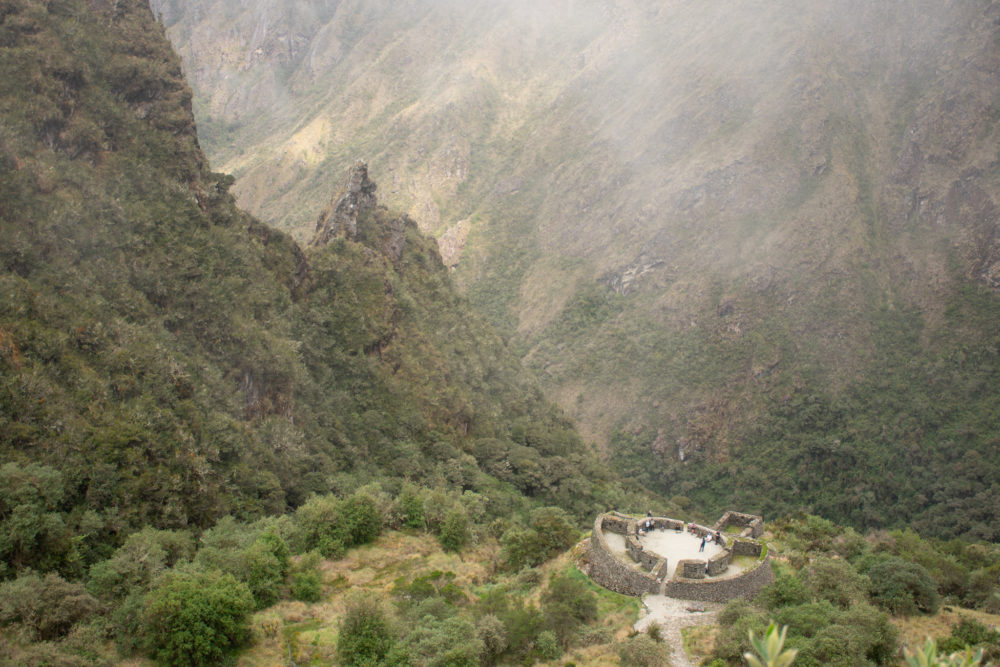
- Machu Picchu & the other sites along the trail are Inca Sites not Inca Ruins because the Spanish never found them and looted them.
- This is NOT the entire Inca Trail. There are actually many Inca Trails that spread out from Machu Picchu and enter into Chile and Bolivia.
- There is a Inca Trail Marathon. The fastest recorded time to cover the 26.2 miles was done by a local porter: 3 hours and 23 minutes. Our guide completed the race in under 5 hours and 45 minutes. Meanwhile it takes us 4 days.
- The oldest trekker (not local) to complete the trail was 84. Many of our porters were in thier 60s.
- Speaking of porters, they carry 50-80 lbs on thier back. It might be one of the most difficult jobs in the world.
- Coca Tea Leaves (yes, the cocaine kind) are vital here. They help with altitude sickness and locals eat them like candy.
- There are no alpacas on the Inca Trail just Llamas.
- The Quechuan language is still the primary language spoken in the small villages along the Inca Trail. Most also speak Spanish to supplement since there are many words the Quechua people had no use for & therefore don’t have– like table or fork for instance.
Do I Need a Guide?
Yes, since 2002 the Peruvian government has required that each trekker obtain both a permit & a guide. YOU CANNOT HIKE THE INCA TRAIL INDEPENDENTLY. Fortunately, when you book a guide they handle the hassle of obtaining the permit. Guides also come with porters for your gear and chefs for cooking exceptional meals.
The ONLY Tour Company You Should Book With
Alpaca Expeditions.

I’ll try not to inundate you with reasons Alpaca is the best but here are the most important.
They are affordable. The Inca Trail can cost anywhere from $650-$1,200 per person. Alpaca Expeditions is on the low end of the price range. Just $650 when I booked.
The company is owned by a previous porter and employs only locals to guide and be porters for the Inca Trail. Porters fight over who gets a position with this company. They treat their workers well and pay them a fair wage.


They were the very first company to hire female guides & then added on female porters a year later. Do it for women’s rights.
Alpaca Expeditions camps at different sites than the competition which means less crowded camps. They also have the most scenic campsites.
When it comes to food & facilities on the Traditional Inca Trail, Alpaca goes above and beyond. Their chef made some of the very best food we had in Peru. They even bring along their own port-a-poddy so you don’t have to use the horrendous trail facilities.
But my main reason for recommending Alpaca Expeditions is our guide. Elisaban was charismatic, spoke excellent English, and filled our days with stories of Quechuan culture and history. He used to be a porter himself. He also knew tons of secret spots on the path, as well as taught us to make jungle arrows, and use his slingshot. Things he knows from living his whole life in the Andes. Currently, he lives in a small village on the Inca Trail and guides full-time. We still keep in contact today. You can definitely ask for Elisaban to be your guide on the Inca Trail or any of Alpaca Expeditions treks.
This is not a sponsored post. I don’t receive any commission if you book through my links. I did my Inca Trail Trek with them after countless recommendations from local travel contacts I had in Colombia & Peru. It was the most spectacular experience I’ve had in my life.


How Far in Advance Should You Book Your Inca Expedition?
As far in advance as you possibly can. Currently, the government allows 250 permits per day to begin the Inca Trail. We got lucky and managed to book only one month before our trip. But this is COVID times. After COVID, I expect the booking slots to fill up much faster again. 3-6 months ahead of time in recommended.
Alpaca Expeditions Accommodation, Food, & Facilities
I already touched on the superiority of Alpaca Expeditions when it comes to food. Their chef is out of this world. Every morning we were greeted with a spread of tea, coffee, hot cocoa, and a selection of homemade donuts, pancakes, toast, omelets, and fresh fruit. Lunch and dinner were massive feasts of 4-6 authentic cusqueño dishes like rainbow trout with mango sauce, chaufa (fried rice dish), meatballs, buttery smooth potatoes, garlic bread, salad, mushroom pasta, fried chicken, yuca, and countless more. No meal was the same. He even somehow baked us a cake made from Carob pods on our last night (kinda like chocolate).



Expect your accommodation to be two-person tents. The porters will have already set them up upon your arrival and I know first-hand that they can withstand the torrential downpour of an Andean thunderstorm without getting the slightest bit wet. Alpaca Expeditions carefully selects the most scenic campsites for their guests.
One porter is specifically dedicated to carrying the Alpaca Expedition bathroom. It’s a small composting toilet with a neat little tent all its own. Trust me, you’ll be happy it’s nearby late at night.
Elisaban told us a horror story about a hiker he led many years ago who woke up in the middle of the night to use the trail bathroom (notoriously dirty) and managed to fall INTO the pit toilet. They found him several hours later. A headlamp is a good idea.
How Much Money Should You Bring on the Inca Trail?
There are a handful of things you might need some cash for on the Inca Trail. For starters, all the bathrooms on the first day of your hike will cost 1 sole (about .25 cents) because they belong to the small villages you pass through. After that, you’ll have the camp bathroom or the trail facilities which are free.
You might also want to purchase pringles, Gatorade, a beer, or one of the other snacks that the local women sell along the trail on day 1 & day 2. The prices are inflated because they hike these products from Cusco to sell 20 or so miles up the mountain. Expect a Gatorade to set you back 15 soles.
You should also bring enough cash to tip your porters, chef, and guide. I’ll discuss how much to tip a little later.
How Long is the Inca Trail?
The Traditional Inca Trail begins at KM 82 about 2 hours drive from Cusco. From there you will walk the 28 miles or 45 KM to Machu Picchu. Broken up over 4 days, it’s not the miles that wear you down- it’s the elevation. Much of the trail is what they call “Inca Flat” or more of a rolling up and down. But often the trail is straight up the side of a steep Andean mountain.
When You Should Plan Your Visit?
Cusco has two seasons. Wet and Dry. The dry season is infinitely more popular for trekking but it’s also colder. If you’re someone (like me) who despises cold temps I would try to visit during the shoulder season or even during the wetter “summer” months as they are far warmer.
Dry Season: April-October
Wet Season: November-March
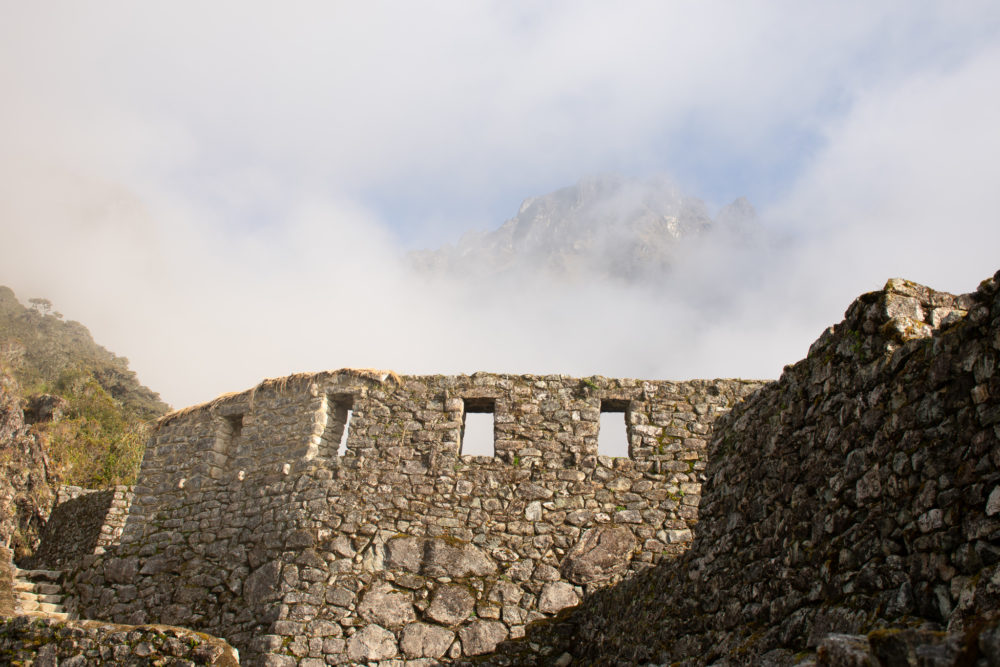
The most popular days to visit Machu Picchu are the winter & summer solstice. The winter solstice is June 21st and the Summer is December 22nd. The Incas really revered astronomy. Because of this many of the temples in Machu Picchu are built specifically to reflect the sun on those days. Book far in advance if you want to time your visit.
Machu Picchu and the Inca Trail are closed during the month of February. Both because the rivers flood with rain making many trails impassable and to allow the natural landscape a break from all the tourists.
Traditional Inca Trail Map 4D/3N with Alpaca Expeditions
This is the official Alpaca Expeditions trail map for the Traditional Inca Trail. We chose the 4D/3N option because it allows for a good pace on the trail.

Notice that it indicates the first day is moderate, the second challenging, and the third easy. I did not agree with this. I found each of the three days to be moderately challenging in their own way.
Your Complete Guide to the Traditional Inca Trail
Okay, so now you’ve booked with Alpaca Expeditions- let’s look at everything you need to know before your trek.
How Difficult is the Inca Trail Trek?
It can be hard to explain trail difficulty. Because despite fitness levels, what is easy for someone might be much more difficult for someone else. You will be hiking around 10 miles and 2,000-3,000 ft of elevation gain per day. There are three mountain passes you will ascend the highest being at 14,600 ft of altitude. It is not a walk in the park. You will need to be in relatively good shape to complete this trek.

That being said, it wasn’t as difficult as I imagined. People as old as 84 complete this 4-day excursion. And with our guide Elisaban, keeping spirits high and setting a good pace I never felt so exhausted I couldn’t continue.
People sprain ankles. Get sick. Or are simply not fit enough for this trek. Elisaban described many times where he piggy-backed PEOPLE along the path when they couldn’t make it any further. With Alpaca you’re in good hands. But don’t rely on this. If you can’t make it on your own two feet you have no business attempting the trek.
The first day is set up to be just challenging enough to test people’s fitness levels. If you’re REALLY struggling & not just from the thin air and altitude (because you’ll acclimate) this is your chance to go back. After day one, the only way out is through.
How to Acclimate Before the Trek
People who suffer on the Traditional Inca Trail are typically people who didn’t take the acclimatization seriously. Spend time in Cusco before the trek. A minimum of three days if you can. Your body will need it to adjust to the lack of oxygen. Also, drink 2-3x the amount of water you normally would.
I also don’t recommend flying into Cusco. The city sits at 11,200 ft and it was painful enough taking the bus from sea level to that height- let alone flying. You can also get medication from your physician at home to help you handle the altitude before your trip. Those in our group who took it handled the heights best.
What to Pack for the Traditional Inca Trail
I’ll link Alpaca Expedition’s extensive packing list here.
You’ll receive a bright green duffel the night before your trek that the porters will carry. This bag holds your camp items. Like an extra pair of shoes (Tevas), headphones for a bedtime podcast, pajamas, and your other hiking outfit. This bag is allowed to weigh 7kg or 15lbs total including your sleeping bag, pillow, sleeping liner, and toiletries. You can leave all the rest of your things either at the Alpaca Expeditions office or your hostel storage free of charge.

I would add Ibuprophen for when you get a splitting altitude headache & Pepto-Bismol to handle the gastrointestinal effects of altitude. You’ll also be getting up before daylight often and a headlamp will come in handy.
Alpaca Expeditions offers sleeping bags, an inflatable sleeping mat, and trekking pole rentals for travelers who arrive without them. The cost for a set of all three is $50. We were traveling long-term and weren’t lugging those around with us- so we rented. The bag was exceptionally warm and came with a light liner to keep the bag clean, the sleeping mat was a lifesaver on the hard mountain ground, and trekking poles are an ABSOLUTE MUST. I never hike with poles but this steep stone stair terrain is treacherous without them even when they are dry. Everyone gets a cozy green pillow.
What to Expect on the Inca Trail
Pure unadulterated joy. Unspoiled views of nature. Connection with the culture and landscape. Making new friends. For those of you looking for a less ambiguous “What to Expect” here’s a breakdown of what the Alpaca Expedition Traditional Inca Trail looks like day-to-day.


Day One
Early wake-up call. At 4:30 AM you’ll be picked up from Cusco and driven the 2 hours to the start of the trail with a quick stop at the porters base camp for breakfast. From KM 82, you’ll follow the river on foot through cacti-speckled mountainsides for 4-ish hours. This will be your first experience with Inca Flat. The terrain will be easy but mostly a slight uphill. Lunch will be served in one of the small villages and following your feast, you’ll have another 2-3 hours of hiking “Inca Flat” ahead of you. The campsite tonight sits at around 11,000ft and offers spectacular views of snow-capped mountain peaks.

This day was difficult for us because it was exposed to the blazing sun. We were hot & we walked around 10 miles in total. Thankfully, we had that sun hat we purchased for 20 soles at the start of the trail.
Day Two
Another early morning greeted with coca tea. At around 4:30 AM we got up for camp breakfast. We knew this was going to be the most difficult day & it was. You’ll cover another 10 miles but this time submitting two separate peaks. Dead Woman’s Pass at 14,600ft in the morning and the second after lunch. The trail passed through cloud forest, alpine meadows, and then craggy mountain summits. As far as breath-taking (literally) scenery goes this day was unparalleled.
The trail goes up then steeply down uneven rock stairs. Then back up and down again before you make camp. Most of us struggled to eat on day one or two because of the altitude and exhaustion. Just try to eat what you can.
Your guide will determine your wake-up time based on how fast you have been hiking. Those in other camps who struggled, got up earlier to make it to day 2’s campsite by nightfall.
Tonight you’ll camp at 12,000ft in the rainforest. This is a great spot for sunset.
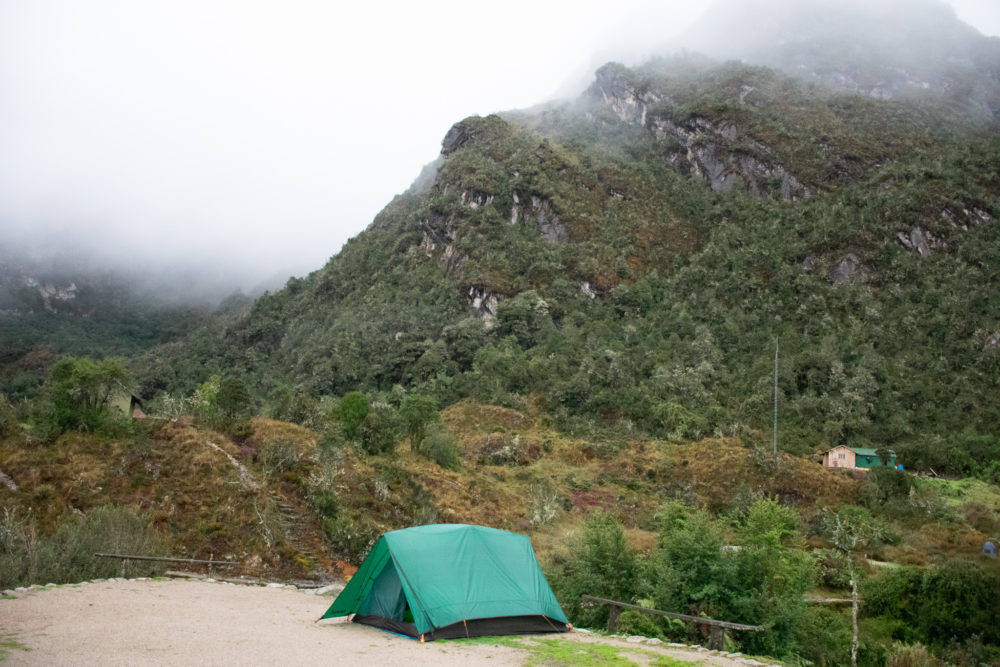
Day Three
The “easy day”. Not so much. With sore muscles from day 2 and 4-hours of steep downhill terrain, it was a real knee-killer. We did however get to sleep in until 5:30 AM.
You’ll reach camp early this afternoon allowing for rest time, popcorn happy hour, and exploring my favorite of the Inca Sites-Wiñaywayna (which is about 5 minutes outside your camp at Alpaca Expeditions). We also saw the most wildlife on this day. We spotted several capybaras, colorful birds of paradise, and luminescent yellow and blue butterflies in the rainforest canopy.



Day Four
The day you have been waiting for. After a 3:30-4 AM wake-up you’ll head straight to the Machu Picchu checkpoint with your sack breakfast and wait until the gates open at 5:30 AM. From there, it’s a quick 1-2 hour hike up to the sun gate where you’ll get your first glimpse of the infamous Machu Picchu (if you’re lucky and it’s not fogged in). Then you’ll descend into the civilization and explore for around 3 hours.

Alpaca Expeditions has exclusive sites in Machu Picchu that only they can access so you’ll be sure to get shots of the Inca site without hundreds of people milling about. Once you’ve had your fill of Indiana Jones-ing you’ll then ride the bus down to Agua Calientes town for one last lunch with your group. At around 2 PM, you’ll ride the scenic train to Ollantaytambo and be picked up by an Alpaca Expeditions van to deliver you to your hotel or hostel in Cusco before dinner.
Fun Fact: After the Sun Gate (which you never reach for sunrise- it’s not allowed & it only matches the sun during the summer solstice anyways) you must exit and use the restroom before you actually enter Machu Picchu. Because it’s like a festival- once you enter you can’t leave again & there are NO bathrooms. So hold off on that extra cup of coffee.
How Much Should I Tip?
Tipping is always a tricky topic. Because truthfully it’s completely up to you. Alpaca Expeditions makes sure to pay their staff a fair wage so they aren’t reliant on your tips to live BUT once you see how hard they work you’ll want to throw them some extra dough…I guarantee it.
Each group (ours had 6 people) will have around 12 porters, 1 chef, and 1 guide. The standard tip is around 70 soles per porter and 150 soles for the chef split between your ENTIRE group. Individually, we each tipped for 2 porters and threw in 25 soles for the chef. The standard for the guide is $15-20 USD per person. But you can tip whatever you want.
Alternatives to the Inca Trail
There are no real alternatives to the Traditional Inca Trail. It belongs in a category all its own. It’s the only trek you’ll see numerous Inca sites, mountains, rainforests, and arrive at Machu Picchu before the hordes. But if you REALLY can’t spring for the hefty price tag, I understand. I’m a budget traveler at heart.

Salkantay Trek
This is the second-best option. The Salkantay Trek (also offered by Alpaca Expeditions) also arrives early to Machu Picchu but from the tallest most menacing mountains in the Andes. The highest altitude you’ll reach is 15,200 ft and in no way is it easier than the Inca Trail. You’ll trade Inca sites for blue glacial lakes and enjoy cabanas instead of tent camping.
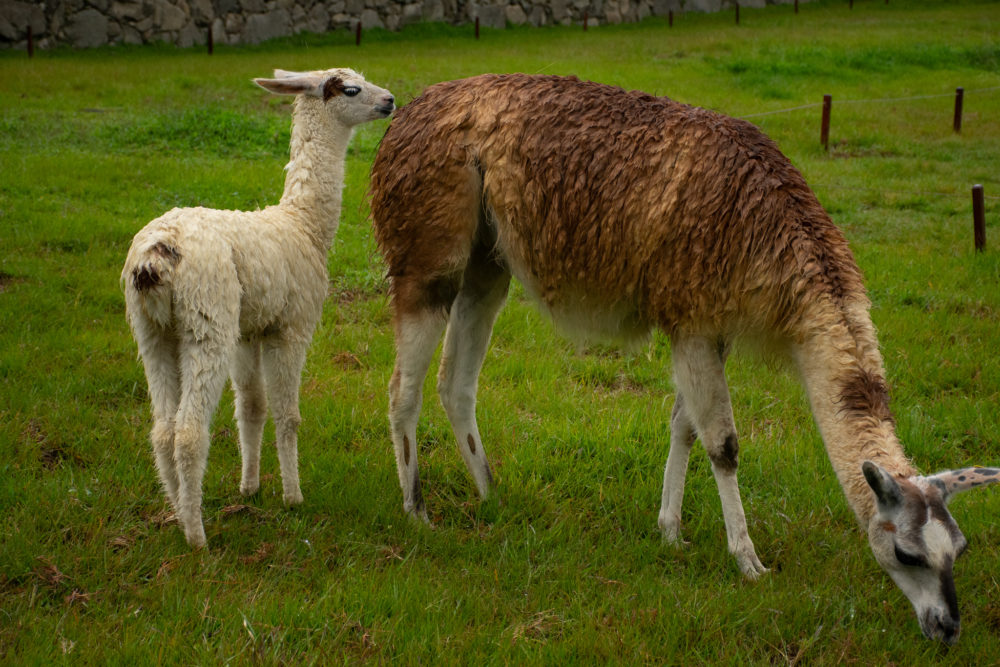
We chose the Traditional Inca Trail over this hike because we plan to visit Huaraz. A trekking destination in Peru famed for its glacial lakes and thought this scenery would be repetitive. We made the right decision.
Scenic Train + Hike to Machu Picchu
If for whatever reason, you don’t find yourself fit enough or with enough time in your schedule to partake in either trek (at least consider the SHORT INCA TRAIL TREK) then this is likely your best option.
But I’ll be honest it’s not a good one.
You’ll take the “scenic” train from Ollantaytambo to Agua Calientes. Here you’ll begin a 1-2 hour-long hike up the mountain to Machu Picchu. It’s the “budget-backpacker” way & therefore extremely crowded. You’ll reach Machu Picchu with all the rest of the tourists and snap your Instagram shots without learning a damn thing about the civilization you’re visiting.
Sorry if I’m bursting your bubble here, but I’m just trying to keep it real. There’s a reason I coughed up the cash for the treks.

Scenic Train + Machu Picchu Bus
This is the least good option of them all.
I hesitate to even write about it. This allows you to bypass all hiking or walking whatsoever by taking a bus up the winding mountain straight to the Machu Picchu entrance. Unless you’re elderly and frail, I hope you don’t visit Machu Picchu under these conditions.
Another trek that caught my eye was the combined Rainbow Mountain, Machu Picchu, Ausangate Peak trek. For those that don’t care so much about Incan history and archaeological sites.
Hiking the Traditional Inca Trail is a once-in-a-lifetime experience that I won’t soon forget. It’s my very favorite trek I’ve ever embarked on (& we’ve done our fair share of hiking). Feel free to shoot me an email at geena.truman@gmail.com with questions or concerns and I can put you in contact with Elisaban so that you can book your epic Andean adventure.



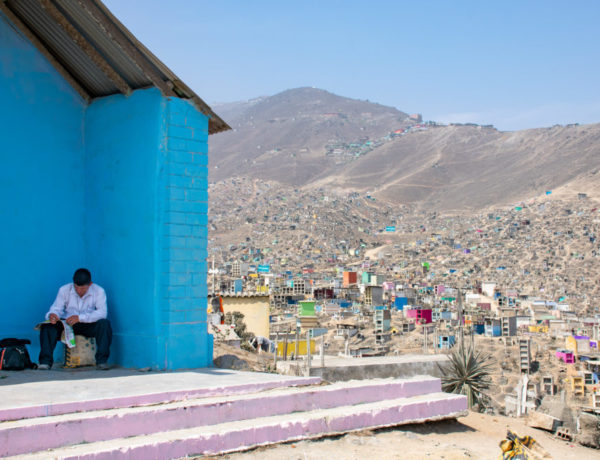



1 Comment
Kate B
November 18, 2022 at 5:25 amThanks so much for all the information you wrote about the Inca Trail! I am hiking it in January with Alpaca and cannot wait!